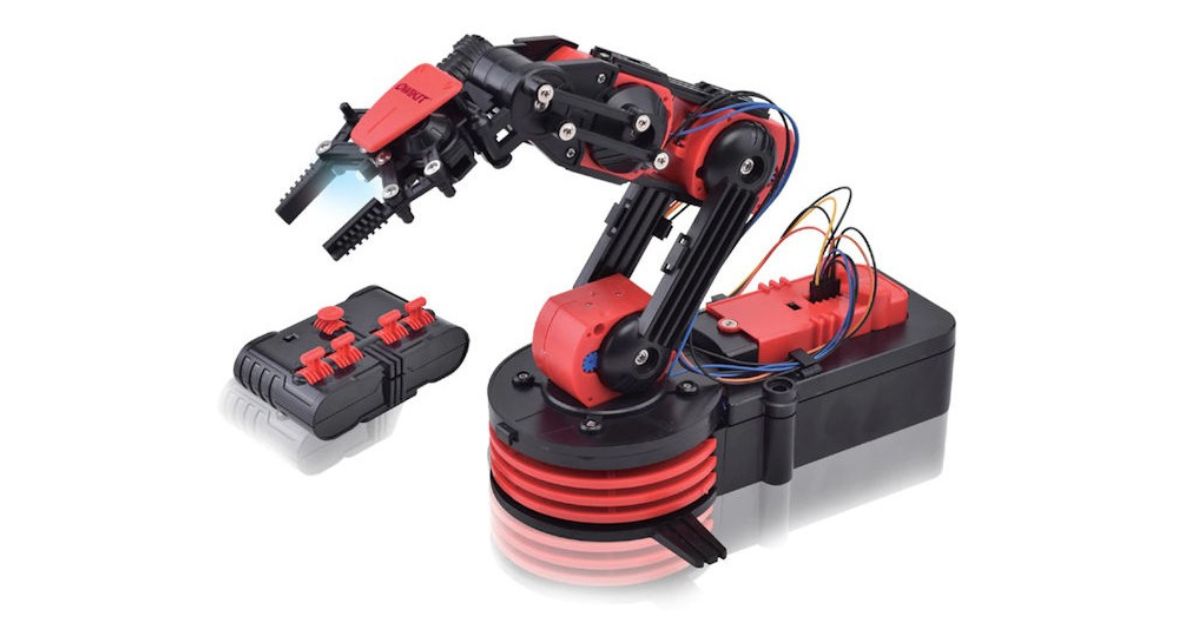Exploring the exciting world of electronics and robotics sparks children’s creativity and helps them develop problem-solving skills. If you’re eager to inspire the next generation of inventors and tech enthusiasts, this is the guide for you.
By the time you finish reading the information below, you’ll have numerous strategies that will introduce young students to the fascinating possibilities of electronics and robotics.
Why Teach Electronics and Robotics to Kids?
Electronics and robotics are more than just fun projects with blinking LEDs and moving parts. In fact, they provide invaluable opportunities for young students.
Problem-Solving Skills
With projects like assembling an LED circuit or programming a robot to follow a line, students can learn how to think critically and troubleshoot complications.
Hands-On Learning
Hand-on activities shift learning from theoretical ideas to experiments that keep students engaged. A hands-on approach allows them to see the direct impact of their actions.
Teamwork
Many robotics activities involve group collaboration. This educational format helps students develop communication and teamwork skills.
Preparation for Future Careers
The workplace is rapidly evolving toward an increased reliance on technology and automation. By learning the basics of robotics, electronics, and coding, students can get a head start in pursuing STEM (science, technology, engineering, and mathematics) careers.
By framing these benefits, you can help students and their families recognize how fun and practical these subjects truly are.
How To Engage Young Learners
You don’t need to invest in expensive equipment or have advanced technical knowledge. Simply focus on creating a learning environment that’s welcoming, encouraging, and tailored to your students’ current levels of understanding.
Demonstrate Everyday Connections
Demonstrate how the systems children encounter every day rely on electronics and robotics. You can use examples like:
- How an alarm clock uses circuits to tell time and trigger the alarm.
- How traffic lights use sensors and timers.
- How robotic vacuums use sensors and programming to map a room and clean it.
Breaking these concepts into familiar terms makes the subject feel more relatable and less intimidating.
Keep Projects Age Appropriate
For younger students, start small with simple projects like creating a basic LED light circuit or building a motorized car from a kit. At this stage, focus on making them comfortable working with the tools and components rather than rushing into complex theories.
Older students can tackle more sophisticated projects, such as programming a robot to complete a maze or constructing more advanced circuits that involve sensors and microcontrollers.
Ask Open-Ended Questions
Create an environment where students feel free to explore their curiosity by proposing open-ended questions. With simple questions, you can prompt critical thinking and encourage students to experiment without fear of failure.

The Power of Using Models
When introducing electronics and robotics to young students, models are some of the most effective tools in your teaching arsenal.
Depending on your goals, these can be physical tools or conceptual frameworks that help simplify ideas and make abstract concepts tangible. Many model supply shops like Midwest Model Supply have a wide variety of models available, so read along to decide which type is best for you.
Preconstructed Models
As a starting point, use preconstructed models like preassembled robotic kits or a partially assembled circuit. Before kids attempt to design something themselves, these models encourage the students to visualize and understand how the components work together.
For example, a kit with a preconstructed model car can teach the basics of gear movement, motor connections, and batteries. Once students understand how the car works, they can experiment by adding features that improve its design.
Simulation Models
Digital simulation tools provide a virtual sandbox for testing theoretical models. When working with students who may not have easy access to physical parts, these tools are particularly helpful.
Without requiring physical prototypes, simulation models give you the opportunity to illustrate how circuits work or show how specific programming will affect the robot’s movements.
Conceptual Models
For conceptual teaching, use metaphors or storytelling that connect technology to everyday experiences.
For example, compare electric circuits to water pipes. Help students envision electricity as water, wires as pipes, and resistors as faucets that regulate flow. This visualization makes complex ideas much easier to comprehend.
Introducing Tools and Technology
Before working with any tools, you need to help students become comfortable with them.
Basic Tools for Electronics
- Breadboards for assembling temporary circuits.
- Multimeters for measuring voltage, current, and resistance.
- Basic components like LEDs, resistors, capacitors, batteries, and switches.
Tools for Robotics
- Programmed microcontrollers such as Arduino or Raspberry Pi.
- Servos and motors to bring projects to life.
- Sensors like infrared or ultrasonic for projects that involve detecting objects.
Programming Platforms
Particularly for beginners, programs like Scratch are excellent because they have an easy-to-use drag-and-drop interface. On the other hand, suggest programming languages like Python or Arduino IDE for older students.

Foster a Sense of Community
Electronics and robotics don’t have to be solo endeavors; they’re commonly more enjoyable when shared with others! By fostering collaboration and a sense of community, you’ll also encourage students to keep developing their skills outside the classroom.
Encourage Group Challenges or Competitions
There’s nothing like a little friendly competition to build excitement. Try organizing robot races with simple preconstructed cars or a contest to see whose circuit design is the most energy efficient.
Showcase Student Work
Whether it’s a corner of the classroom or an online blog where they can share their work, set up a space for students to display their projects. This recognition builds confidence and motivates students to take on new challenges.
Tap Into Existing Communities
Help students participate in local or online maker groups, STEM clubs, or hackathons. These communities expose them to a broader range of projects and foster connections with like-minded peers.
The Next Step for You as an Educator
Introducing young students to electronics and robotics is a rewarding challenge. You nurture critical thinkers, problem solvers, and creative innovators, all while fostering a sense of wonder about how technology shapes our lives.
If you’re ready to engage young minds in this exciting field, head over to Midwest Model Supply to explore the many different models and educational tools we have available. Once you have the necessary tools, it’s time for you to ignite the spark that lights the way for tomorrow’s innovators.


